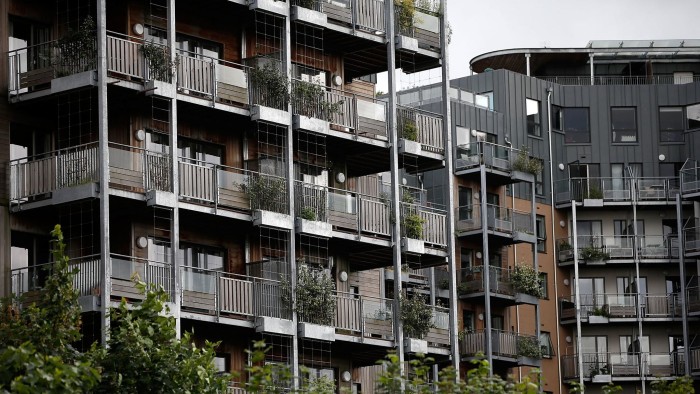Property shortage leads to unusually busy July in housing market

Roula Khalaf, Editor of the FT, selects her favourite stories in this weekly newsletter.
A lack of homes for sale pushed up prices and demand in July, with the traditionally quiet summer month showing its strongest activity since before the financial crisis.
The monthly LSL Property Services/Acadata report found that compared with last year, this year saw lower sales volumes in every month up to June. But last month was the strongest July for sales volumes since 2007 and also led to average house prices reaching their seventh new peak this year.
A separate monthly survey from the Royal Institute of Chartered Surveyors found that buyer demand in July rose at the fastest pace since last February. At the same time, the average number of properties for sale per surveyor fell to a record low.
Simon Rubinsohn, chief economist at Rics, said surveyors were reporting renewed acceleration in house prices, and “more worrying still is the suspicion that the imbalance between supply and demand will lead to even stronger price gains over the next 12 months”.
With mortgage rates close to record lows, consumer confidence high and wages forecast to grow this year, most commentators expect prices to continue to rise this year.
A hoped-for post-election increase in the number of properties on the market has not materialised, raising fears of higher prices that could push home ownership further out of reach for many.
On Wednesday, a report from the Bank of England’s network of regional agents warned that the continuing shortage of properties for sale was becoming “self-perpetuating, as potential vendors were reluctant to put their homes on the market if they could not see properties they wanted to buy”.
Adrian Gill, director of Reeds Rains and Your Move estate agents, both owned by LSL, said volumes were still substantially below levels seen before the crash.
In depth

Since the price slide induced in 2008-09 by the financial crisis, from a 2007 market peak, house price indices have presented wildly contrasting pictures of the health of the housing market. According to some, the boom is back, while to others the slump staggers on.
In the first quarter of the year, planning approvals for new homes reached their highest level since the financial crisis, but it remains to be seen if this translates into housebuilding.
According to the Acadata report, house prices in Reading have seen the steepest rise over the past year, up 15.2 per cent, while central London has stalled, with higher stamp duty and rising sterling damping interest.
However, the overall index — which is based on completed sales from the Land Registry combined with a forecasting model based on other indices — suggests that the pace of rises has slowed slightly, and paints a more muted picture than other indices.
It puts the monthly increase at 0.3 per cent, with the annual rate of change excluding London and the south-east, at 4 per cent.
The Halifax house price survey, by contrast, put the pace of annual increases in June at 8.6 per cent.
Comments